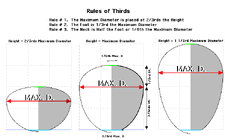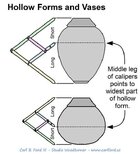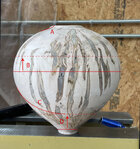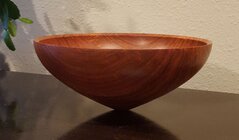Okay, trying to get my shapes better for vase type HF’s. This one measures 10-3/4 x 10.
I tried to get a flowing curve but it may still be too fat.
I will remove about a 1/2” off the bottom as I left it a little longer in case I need to put it back on the lathe.
Tell me honestly what you think and/or what I need to work on.
I’ve already been told it looks like a hot air balloon
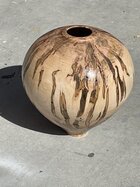
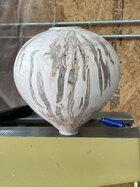
I tried to get a flowing curve but it may still be too fat.
I will remove about a 1/2” off the bottom as I left it a little longer in case I need to put it back on the lathe.
Tell me honestly what you think and/or what I need to work on.
I’ve already been told it looks like a hot air balloon



